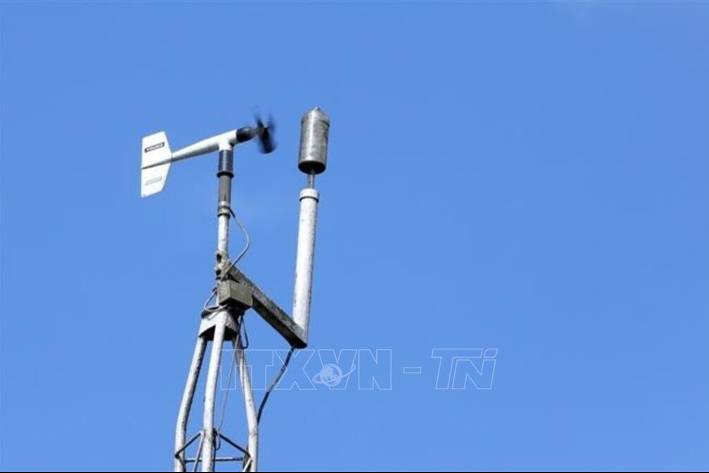The National Center for Hydro-Meteorological Forecasting (under the Ministry of Natural Resources and Environment) has announced that it will expand international cooperation to enhance its capacity, adopt advanced scientific methods, and modernize technologies and procedures in disaster forecasting and impact prediction.
Effectiveness of cooperation
Mr. Mai Van Khiem, Director of the National Center for Hydro-Meteorological Forecasting, shared that international cooperation has yielded significant disaster forecasting and response results. For instance, with Typhoon No. 3, internationally known as Super Typhoon Yagi, meteorological agencies from Japan, the United States, Taiwan (China), and others promptly and proactively exchanged information with Viet Nam's meteorological agency as soon as the typhoon formed near Luzon Island (Philippines). Thanks to regular information exchange between meteorological agencies and international experts, Typhoon No. 3 was accurately predicted in terms of its direction, impact, scope, and intensity, allowing authorities to prepare and minimize the damage caused by the storm.
To further advance scientific development and international cooperation in disaster forecasting and warning, Mr. Khiem said the center would continue to implement research projects according to approved timelines, evaluate the transferability of products from both domestic and international projects, and gradually modernize meteorological forecasting technologies.
In addition, Viet Nam plans to expand international cooperation and implement the Global Framework for Climate Services (GFCS) within the country. It will also review information and requirements from the World Meteorological Organization (WMO) for a specialized Regional Meteorological Center (RSMC) for Severe Weather Forecasting (SWF) and aims to transition from a Regional Support Center (RSFC) to a specialized center for Southeast Asia.
 Wind measuring equipment at Mau Son Meteorological Station, Lang Son Province Hydrometeorological Station.
Wind measuring equipment at Mau Son Meteorological Station, Lang Son Province Hydrometeorological Station.
Focus on communication
According to Mr. Khiem, communication efforts with the media are vital to ensure the timely dissemination of disaster forecasts and warnings to the public. During Typhoon No. 3, the center promptly provided forecasts and updates to the National Civil Defense Steering Committee, the Ministry of Agriculture and Rural Development, and other related ministries and agencies, enabling effective coordination and disaster response.
Information was shared via written reports, and continuous updates on Typhoon No. 3 and its aftermath were available on the center's website (nchmf.gov.vn) and provincial and regional hydro-meteorological stations' platforms. The center issued 46 official bulletins and 63 supplemental updates to assist authorities in their response efforts.
The National Center for Hydro-Meteorological Forecasting also provided information to media outlets through 47 interviews and produced 30 video clips covering natural disaster developments, warnings, and educational content on storm impacts and safety measures.
This proactive communication approach resulted in timely and accurate news coverage on various media platforms, allowing citizens to stay informed and prepare for the storm, significantly reducing damage to lives and property.
Even now, updates on northern region rainstorms, landslides, cold fronts, tidal flooding in the Mekong Delta, and nationwide weather conditions are constantly posted on the center's website. Meteorological experts remain on standby day and night, ready to provide the earliest and most accurate forecasts and warnings to authorities and communities. This active engagement has made Viet Nam's disaster forecasting efforts more timely and flexible, contributing to economic and social development.